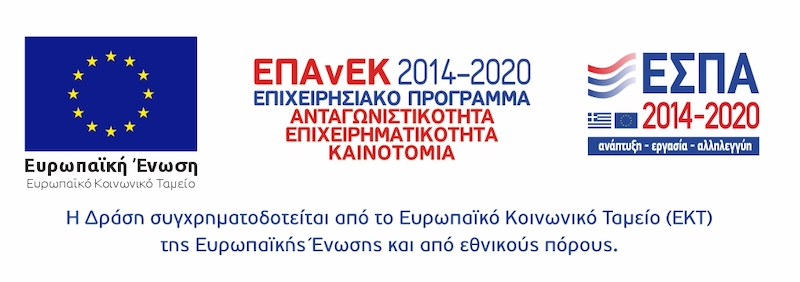
Churches-Temples-Monasteries
GUIDE TO KEFALONIA
The Monastery is located on the valley of Omala and it is the most important religious site of Kefalonia. It was founded in 1560 by Saint Gerasimos himself, who was declared the patron saint of the island. We celebrate his name with a big festival twice a year, on October 20, but also on August 16. For us, Saint Gerasimos is simply the "Saint", while we honor his name by giving it to our children for hundreds of years now, so much that every family has at least 2 members named “Gerasimos" and "Gerasimoula". The relics of the Saint are kept in the Monastery and are dressed in the vestments of burial, placed in a silver urn, above his tomb. You can also visit the hermitage of the Saint, as its entrance is located inside the temple: it is a very narrow passage that leads through an almost vertical iron staircase three meters long to an underground space which is separated by a narrow hole into "two rooms". In the areas of the Monastery are still preserved, the three large plane trees planted by the Saint himself, as well as the three wells opened with his hands, according to tradition.
In the area of Lixouri, "the Monastery" is "Kipouria". The Kipouria Monastery counts more than 250 years of operation, as it was founded in 1759 by archimandrite Chrysanthos Petropoulos from Paxos, who dedicated it to the Annunciation of the Virgin Mary. It took its name from the many gardens that the monks kept there for their living and is built on a rock plateau, 100 meters above the sea, in a unique position overlooking the West, so that from the courtyard of the monastery visitors can watch one of the most spectacular sunsets on Kefalonia.
Saint Andreas of Milapidia, located in Peratata of Kefalonia and is one of the oldest monasteries on the island. It took its name from the characteristic tree "Milapidia", a cross between apple tree and pear tree that grows there. The faithful can worship the holy relic of the sole of Apostle Andreas, donated to the Monastery by Princess Roxane of Romania when she came to the monastery to become a monk. Agios Andreas of Milapidia operates today as a women's communal monastery. The nuns are engaged in weaving, hieroraptic, hagiography, handicrafts and hospitality, as well as agricultural crops and gardens. There is also a laboratory for the preservation of byzantine icons. The old Katholikon remained intact from the earthquakes of 1953 and today it hosts the Ecclesiastical Museum of Kefalonia. The iconostasis of the church dates back to the early 17th century. The wall paintings of the church were covered with lime until the earthquakes of 1953, as during the British occupation, the monastery was attempted to be altered into a Protestant school.
It is located in Markopoulo, Kefalonia and is also known as Panagia Lagouvarda. Panagia Fidousa of Kefalonia is one of the most famous temples of the island as every year, apart from thousands of pilgrims, also attracts another kind of…unique visitors! These are snakes of small size, harmless, bearing four black small marks on their heads, which form the shape of a cross. They appear between the 6th and the 16th of August on the rocks behind the Frankish bell tower of the church and creep fearlessly among the people and inside the church. According to legend, once pirates threatened the monastery. After the prayers of the monks, snakes surrounded the monastery, repelling the threat! The miracle has been repeated since then every year and is the explanation that folk tradition gives to the appearance of snakes. It is even considered a bad sign that snakes do not appear some year, something that, according to legend, did not happen in 1940, when Greece entered the 2nd World War and 1953, the year of the catastrophic earthquakes for Kefalonia.
The Monastery of Panagia in the village of Domata in Livathos in Kefalonia keeps in its interior one of the most important relics of ecclesiastical history. It is the coffin of Patriarch Gregory V. The holy martyr, according to the Orthodox Church, was hanged by the Turks on Easter Day 1821 in Constantinople, as an act of revenge and retaliation for the revolt of the Greeks that had just burst out. According to tradition, it was the Jewish delegation that bought the relic and, tying large boulders around its neck, threw it into the Bosphorus. The boulders were loosened, however, and the holy relic of the Patriarch began to float. It was found by the Kefalonian shipowner Nikolaos Sklavos, who was sailing with his ship to the Bosphorus and transported it to Odessus. The relics of the heroic Patriarch remained there, while the coffin was given as a blessing to the Kefalonian captain, who carried it to his home island. The iconostasis of the church is wood-carved, covered in gold leaf of incalculable value and was constructed in 1839. The icons are of Russian style and the monastery celebrates the Presentation of the Virgin Mary in November 21st and St Gregory V on the 10th of April.
It is built on the slope of Agia Dynati, near Makriotika in the province of Pylaros, in a location with wonderful views of Ithaca and the Ionian Sea. The Monastery in Thema was founded at the end of the 10th century. The most valuable and important The old wood-carved iconostasis and the icon of the Virgin Mary, which is processed on Easter Tuesday.
Atros Monastery is located near Poros and it is the oldest monastery in Kefalonia, as it is estimated to have been founded in the 8th century. It is built on a hill just above the sea, at an altitude of 760 meters. The hill is crowned by the Medieval tower and the Archontariki that are preserved to this day. The Atros Monastery has no monks nowadays, but is worth a visit, as the medieval buildings convey the atmosphere of an island Byzantine monastery, while the entire system of the monastery, with the cells, the auxiliary spaces and the “katholikon” is preserved and it is in quite good condition.
It is located outside Sami, very close to Panagia in Agrilia. Accoeding to tradition, the Monastery of Agioi Fanenton was founded in the 11th century and had been a male monastery until 1953 when it was evacuated and utterly abandoned, as a result of the severe damages that occurred from the earthquakes in 1953. It was dedicated to the three Christian sailors, Theodore, Gregory and Leon who were part of the Roman fleet. In the 4th century AD, after refusing to convert to the dogma of Arianism imposed by emperor Constantius, they defected off the fleet and chose to monk in the hills around Sami. Several centuries later, their relics were miraculously "revealed" in one of the caves of the area – which was the reason they were attributed the name "Agioi Fanentes", meaning the Saints who have shown themselves. During the Venetian rule the relics were transferred to Venice, where they remained until 2009 when they returned to Kefalonia. In the ruins of the Monastery of Agioi Fanenton you can admire the medieval architecture and post-Byzantine wall paintings and the iscon of Agioi Fanentes, which dates back to 1654 AD and today is kept in Sami in the holy church of the Assumption of the Virgin Mary, along with the relics of the Saints. Every year in June, the repatriation of the relics of Agioi Fanentes is celebrated with a litany in Sami.
One of the oldest monasteries of Kefalonia, it is located in the province of Livathos, near the village of Simotata. Its history begins in the 13th century. According to tradition, its founder was Francis of Assisi himself. It was a Catholic monastery dedicated to Virgin Mary, which became Orthodox later, as it remains to this day. The monastery is known in Kefalonia as "Panagia in Sissia", with this name probably having its roots in the word "Assizis". The "Panagia of Sissia", the icon of the Monastery of Sissia, was crafted in the 15th century. One of the oldest litanies of Kefalonia is held every year in the Monastery, a tradition dating back to the middle ages with roots in the Middle Ages, when the capital of the island was the Castle of St. George. According to religious tradition, every year the ephesian icon of the Monastery of Sissia is transferred by Litany to the church of Evangelistria of the Castle on the first Sunday after Easter Sunday (in Orthodox tradition, the day is dedicated to St Thomas). On Samaritan Sunday, the litany returns to Sissia, while during the reception of the icon a great festival takes place in the monastery. The old monastery of Sissia still stands in the trees, with its impressive architecture being a reminder of the glare of the past.
The small chapel of Agia Varvara is located outside Argostoli, in a cave under the main provincial road. The area was originally called Agios Barbaros. According to tradition, in 1912 a small refugee child fell from the road down into the ravine, but landed on the ground without even suffering the slightest injury! The child himself is said to have stated that he was helped to get down by a woman in white clothes.
Since that incident, villagers passing by, kept seeing a flame that was constantly burning inside the cave all year round. Years later, some built the courage to investigate the mysterious flame, so they went down, inside the cave, only to discover the icon of Agia Varbara. Convinced that it was a miraculous icon, the villagers took it to Argostoli, where an epidemic had burst out and was ravaging the people. The epidemic stopped. Back to the village, a chapel was built inside the cave to honor Agia Varvara and the miraculous icon was placed in it. The chapel can be seen today, from the bridge connecting the road. After 1953, the icon disappeared, many believe it was stolen. Every year on the 4th of December, the locals celebrate the salvation from the epidemic at the chapel.


